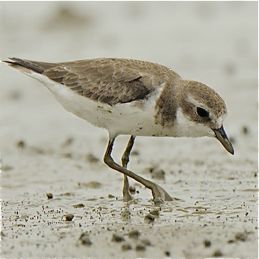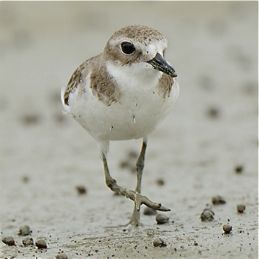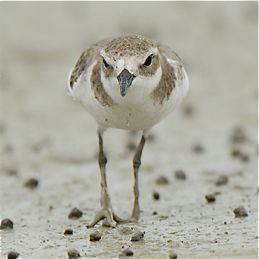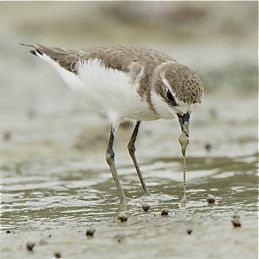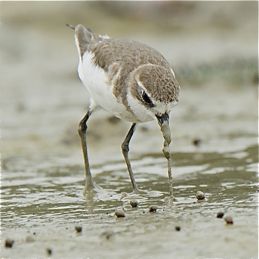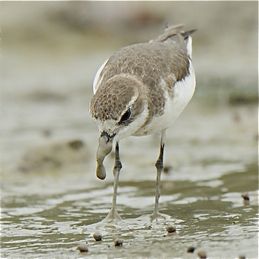This is Irfan Choo’s second documentation a sand-plover preying on another type of polychaete worms. The plover was tentatively identified as Greater Sand-plover (Charadrius leschenaultii), although it may well be a Lesser Sand-plover (Charadrius mongolus). His earlier post can be viewed HERE.
The polychaete worm in this series of images was surprised when it emerged from its burrow, to be immediately picked by the plover. It was detected by a technique known as foot-trembling, seen in the above images. In the other series of images, the worm was literally pulled out of its burrow
The food of these plovers include beetles and other insects and their larvae, molluscs, polychaete worms and crustaceans.
The bird feeds along muddy and sandy interttidal areas, wading in the shallow water to forage.


